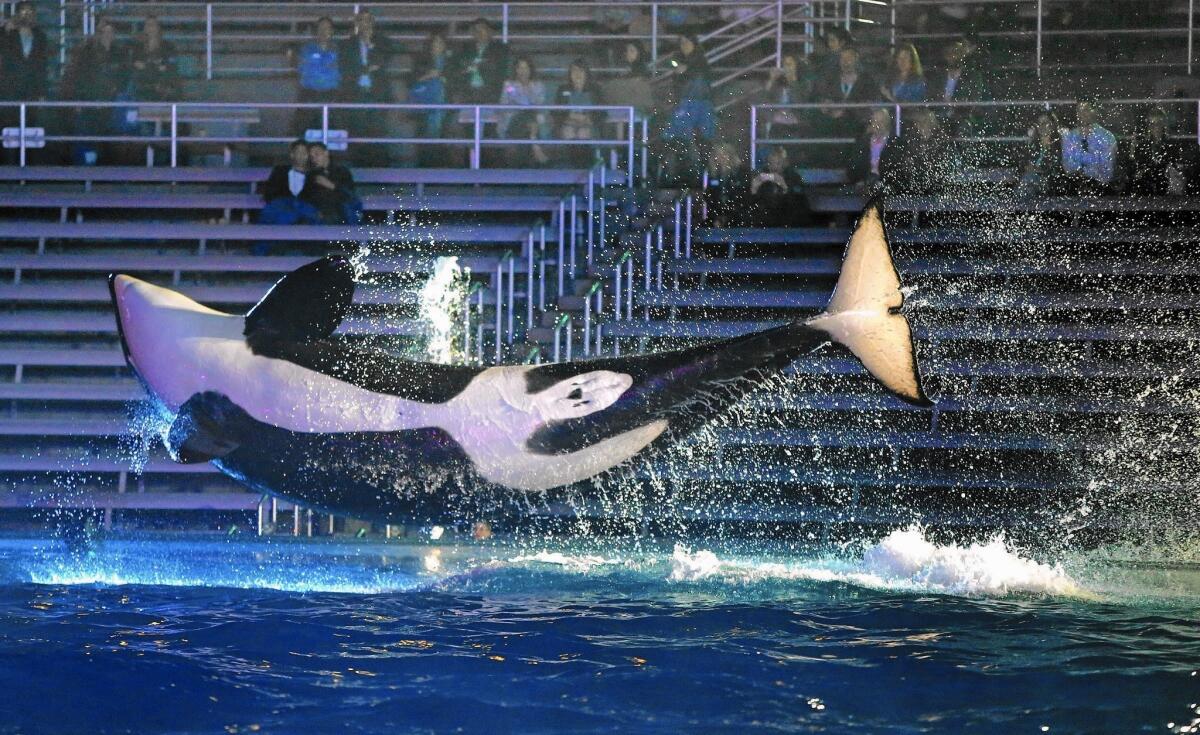SeaWorld reports lackluster revenues and a drop in attendance

SeaWorld attendance and revenue extended their slump in the final quarter of 2016, even as the financial picture brightened at its San Diego and San Antonio parks, the company reported Tuesday.
Across its 12 parks, SeaWorld Entertainment generated revenue of $267.6 million, down slightly from $267.9 million during the same quarter a year earlier. Although 30,000 fewer people visited all SeaWorld parks over the last three months of 2016 compared with the fourth quarter of 2015, attendance was up at the California and Texas parks, Chief Executive Joel Manby said in an earnings call.
The Orlando-based company posted a loss of $11.9 million, or 14 cents a share, in the fourth quarter, compared with a loss of $11 million, or 13 cents a share, in the year-earlier period. The 2016 loss exceeded analysts’ forecasts.
In addition to the continuing drop-off in visitors from Brazil that has dogged SeaWorld’s Florida parks, the company blamed the attendance decline on Hurricane Matthew, which shut down Orlando parks for more than a day in October.
For all of 2016, 471,000 fewer people visited the parks, a 2.1% drop driven primarily by declining visitation at the company’s Florida and Northeast parks. The disappointing numbers were largely offset by growing visitation in Texas and flat attendance in San Diego, SeaWorld said.
For all of last year, revenues stood at $1.34 billion, a 2% drop from 2015’s $1.37 billion. Net losses for the year were $12.5 million, a significant change from 2015, when the company saw net income of $49.1 million.
Over the last year, SeaWorld has taken a number of steps to energize the company, including a plan to aggressively cut costs, a move that is supposed to yield net savings of $40 million by the end of 2018. Key among those moves was the elimination of 320 jobs companywide, including 60 at the San Diego park, a move that should yield $10 million or more in savings, company executives said.
Manby reminded analysts that the company is still in the midst of reinventing its brand.
Last year, it announced it would end orca breeding and replace its longstanding theatrical Shamu show with an orca encounter showcasing the animals’ natural behaviors in the wild. San Diego will be the first park to debut that attraction, starting this summer.
Also on tap for the San Diego park this summer is the new Ocean Explorer attraction, which will feature a three-minute mini submarine ride. Further plans are being readied for 2018, when the park will unveil its fastest and tallest roller coaster, the Electric Eel.
SeaWorld also is planning its foray into virtual reality, beginning with retrofitting its Kraken roller coaster in Orlando so that riders, outfitted with goggles, will feel as though they’re in an underwater landscape.
The technology eventually will reach other SeaWorld parks, Manby said. SeaWorld San Diego has talked about creating a “one-on-one” experience with killer whales that relies on VR goggles and footage of the park’s whales.
Weisberg writes for the San Diego Union-Tribune.
lori.weisberg@sduniontribune.com
ALSO
Amazon cloud service outage breaks parts of the Internet
Hollywood studios help L.A. with 2024 Olympics bid
Google unveils YouTube TV, a web television service that targets younger consumers
More to Read
Inside the business of entertainment
The Wide Shot brings you news, analysis and insights on everything from streaming wars to production — and what it all means for the future.
You may occasionally receive promotional content from the Los Angeles Times.










